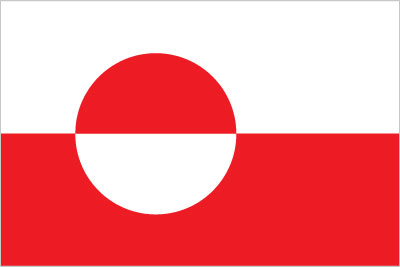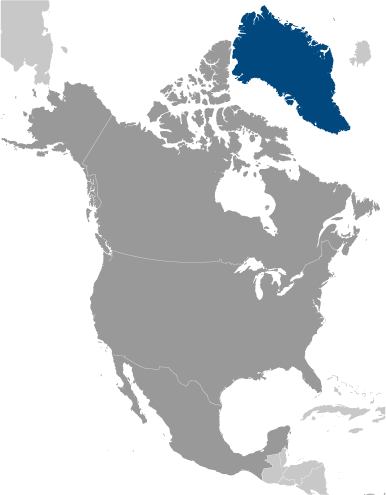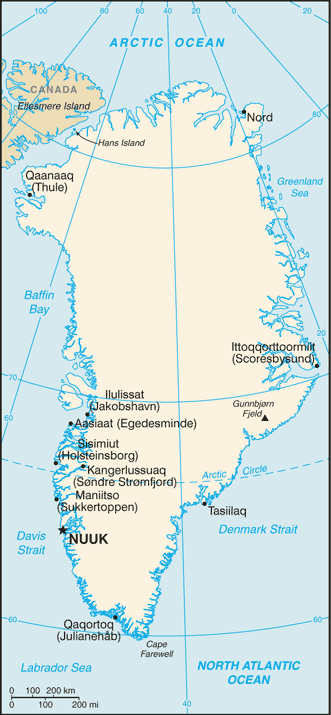|
Economy - overview:
|

|
|
The economy remains critically dependent on exports of shrimp and fish, income from resource exploration and extraction, and on a substantial subsidy from the Danish Government. The subsidy is budgeted to be about $650 million in 2012, approximately 56% of government revenues in 2012 for the year. The public sector, including publicly owned enterprises and the municipalities, plays the dominant role in Greenland's economy. Greenland's real GDP contracted about 1% in 2009 as a result of the global economic slowdown, but is estimated to have grown 2% in 2010 and 3% in 2011. The relative ease with which Greenland has weathered the economic crisis is due to increased hydrocarbon and mineral exploration and extraction activities, a high level of construction activity in the Nuuk area and the increasing price of fish and shrimp. During the last decade the Greenland Home Rule Government (GHRG) pursued conservative fiscal and monetary policies, but public pressure has increased for better schools, health care and retirement systems. The Greenlandic economy has benefited from increasing catches and exports of shrimp, Greenland halibut and, more recently, crabs. Due to Greenland's continued dependence on exports of fish - which accounted for 89% of exports in 2010 - the economy remains very sensitive to foreign developments. International consortia are increasingly active in exploring for hydrocarbon resources off Greenland's western coast, and international studies indicate the potential for oil and gas fields in northern and northeastern Greenland. In May 2007 a US aluminum producer concluded a memorandum of understanding with the Greenland Home Rule Government to build an aluminum smelter and a power generation facility, which takes advantage of Greenland's abundant hydropower potential. Within the area of mining, olivine sand continues to be produced and gold production has resumed in south Greenland, while rare-earth and iron ore mineral projects have been proposed or planned elsewhere on the island. Tourism also offers another avenue of economic growth for Greenland, with increasing numbers of cruise lines now operating in Greenland's western and southern waters during the peak summer tourism season.
|
|
|
GDP (purchasing power parity):
|

|
|
$2.133 billion (2011 est.)
country comparison to the world: 192
$2.071 billion (2010 est.)
$2.03 billion (2009 est.)
|
|
|
GDP (official exchange rate):
|

|
|
$2.16 billion (2011 est.)
|
|
|
GDP - real growth rate:
|

|
|
3% (2011 est.)
country comparison to the world: 108
2% (2010 est.)
-1.2% (2009 est.)
|
|
|
GDP - per capita (PPP):
|

|
|
$37,400 (2008 est.)
country comparison to the world: 34
$36,600 (2007 est.)
|
|
|
GDP - composition by sector:
|

|
|
agriculture: 4%
industry:
29%
services:
67% (2009 est.)
|
|
|
Labor force:
|

|
|
33,670 (2010)
country comparison to the world: 204
|
|
|
Labor force - by occupation:
|

|
|
agriculture: 4%
industry:
29%
services:
67% (2009 est.)
|
|
|
Unemployment rate:
|

|
|
4.9% (2011 est.)
country comparison to the world: 45
4.2% (2010 est.)
|
|
|
Population below poverty line:
|

|
|
9.2% (2007 est.)
|
|
|
Household income or consumption by percentage share:
|

|
|
lowest 10%: NA%
highest 10%:
NA%
|
|
|
Budget:
|

|
|
revenues: $1.72 billion
expenditures:
$1.68 billion (2010)
|
|
|
Taxes and other revenues:
|

|
|
79.6% of GDP (2010)
country comparison to the world: 2
|
|
|
Budget surplus (+) or deficit (-):
|

|
|
1.9% of GDP (2010)
country comparison to the world: 22
|
|
|
Inflation rate (consumer prices):
|

|
|
2.8% (2011 est.)
country comparison to the world: 67
1.7% (2010 est.)
|
|
|
Agriculture - products:
|

|
|
forage crops, garden and greenhouse vegetables; sheep, reindeer; fish
|
|
|
Industries:
|

|
|
fish processing (mainly shrimp and Greenland halibut); gold, niobium, tantalite, uranium, iron and diamond mining; handicrafts, hides and skins, small shipyards
|
|
|
Industrial production growth rate:
|

|
|
NA%
|
|
|
Exports:
|

|
|
$384.3 million (2010)
country comparison to the world: 176
$358 million (2009)
|
|
|
Exports - commodities:
|

|
|
fish and fish products 89%, metals 10% (2008)
|
|
|
Exports - partners:
|

|
|
Denmark 63.3%, Japan 12%, China 6.4% (2011)
|
|
|
Imports:
|

|
|
$814.2 million (2010)
country comparison to the world: 182
$726 million (2009)
|
|
|
Imports - commodities:
|

|
|
machinery and transport equipment, manufactured goods, food, petroleum products
|
|
|
Imports - partners:
|

|
|
Denmark 58.1%, Sweden 19.7%, UK 10.3% (2011)
|
|
|
Debt - external:
|

|
|
$36.4 million (2010)
country comparison to the world: 193
$58 million (2009)
|
|
|
Exchange rates:
|

|
|
Danish kroner (DKK) per US dollar -
5.847 (2011)
5.6241 (2011)
5.6241 (2010)
5.361 (2009)
5.0236 (2008)
|
|
|
Fiscal year:
|

|
|
calendar year
|
|
|
|





 )
)



